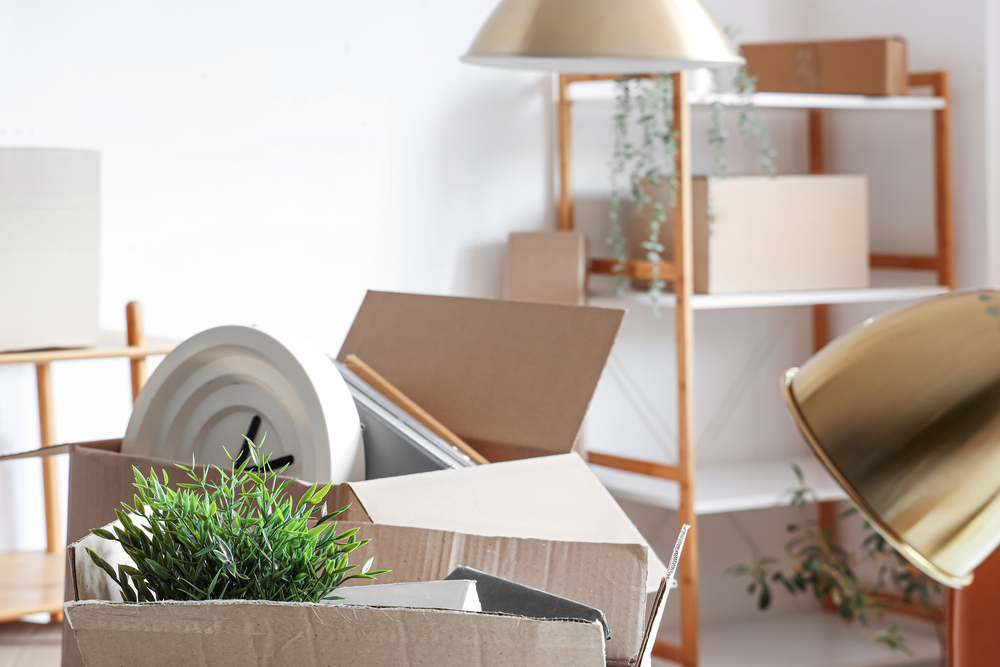Featured
Packing correctly is half the battle when it comes to moving house.
This guide will walk you through all the strategies you need for packing correctly, saving time and money and making the moving process much more manageable.
Planning Your Move
When prepping for your big move, meticulous planning can turn a potentially stressful experience into a smooth transition.
You’ll want to create a comprehensive moving checklist and select the right moving company well before your moving date.

Creating a Moving Checklist
Start Early: Your moving checklist is your road map to a well-organized move.
Begin by listing every task you must accomplish, from sorting and decluttering to packing and labeling.
Prioritize tasks by their urgency and the order in which they must be completed.
Week-by-Week Schedule: Breaking down your planning into a week-by-week moving schedule can help you track what to do as your moving day approaches. Here’s a snapshot to guide you:
- 8 Weeks Out: Sort your belongings and start the decluttering process.
- 6 Weeks Out: Research and begin to select moving services.
- 4 Weeks Out: Start packing non-essential items and finalize hiring movers.
- 2 Weeks Out: Confirm arrangements with your chosen moving company.
- 1 Week Out: Pack a majority of your items, leaving only essentials for the last week.
Don’t forget to inventory your items as you pack so that you can keep track of your belongings and ensure nothing gets lost in transit.
Finding the Right Moving Company
Research: Look for the best moving companies by seeking recommendations, reading reviews, and verifying credentials.
Make sure they are licensed and insured and that they have experience with your type of move, especially if it’s a cross-country move.
Get Estimates: Obtain multiple in-home estimates to compare costs.
A reliable moving company should provide a clear and detailed quote. Be cautious of quotes significantly lower than the market rate, as this could be a red flag.
Ask Questions: When you have your prospective movers on the line, ask about their policies, including cancellation, insurance coverage, and how they handle unexpected issues.
The more informed you are, the more confident you’ll feel in your decision.

Packing Strategies
Establishing an efficient packing plan is vital before you embark on the moving process.
It will save you time, help protect your belongings, and can even reduce moving costs. An online volume calculator is a great way to figure out how much space you’ll need and roughly how much the journey will cost if you hire a removal company.
Sorting and Decluttering
Start your packing venture with a comprehensive purge of your possessions.
Sift through each room, decluttering as you go. Anything that hasn’t been used in the past year or no longer serves a purpose should be placed in one of three piles: donate, sell, or throw away.
By doing this, you not only make packing easier but also reduce the clutter in your new space.
Quick Tips:
- Label boxes for donations for an easier drop-off.
- Sell items online or through a garage sale to lighten your load and add to your moving budget.
Packing Room by Room
Attacking one room at a time allows for a more organized move.
Begin with areas you use less frequently, like the basement or guest room, and end with the kitchen and bedroom.
Utilize uniform moving boxes when possible, keeping them adequately taped and labeled by room and contents.
Bedroom Packing List:
- Clothes: Wardrobe boxes or folded in suitcases
- Bedding: Vacuum-sealed bags to save space

Packing Fragile and Valuable Items
Fragile items require special attention:
- Glassware: Wrap individually in bubble wrap or packing paper, line cardboard boxes with a soft layer of foam or fabric, and avoid leaving empty space.
- Electronics: Use original packaging or secure with enough cushioning.
- Artwork and valuables: Wrap in bubble wrap and consider custom crates.
For each of these items, clearly mark the box as “Fragile” to ensure careful handling by movers.
Packing Essentials and Personal Items
Before you seal up those boxes, take a moment to plan for the first 24 hours in your new home.
Packing a separate essentials box and overnight bag will help ease the transition without having to dig through multiple boxes on moving day.
Essential Boxes and Overnight Bags
When packing for a move, create an essentials box where you’ll keep crucial items like important documents, a moving folder for organization, bed sheets, and towels to ensure the first night’s sleep is comfortable.
This box should be clearly labeled and set aside so it doesn’t get mixed up with the rest of your belongings.
- Important documents: passports, birth certificates, and insurance policies
- Moving folder: contain contracts, receipts, and moving checklists
- Liquids: pack a minimal amount to prevent spills, such as hand soap and a water bottle
- Medications and first aid: ensure you have a week’s supply and a basic first aid kit
- Toiletries: toothbrush, toothpaste, shampoo, and shower gel
- Makeup: keep your daily routine items accessible
In addition to your essentials box, pack an overnight bag or carry-on suitcase.
This bag acts like a portable personal kit, containing a change of clothes, pajamas, and personal hygiene supplies for your first day and night.

Special Considerations for Kids and Pets
If you’re moving with kids, include a small bag with their favorite toys, snacks, and items that will comfort them during the transition.
Remember to pack any special medications or first aid items they might need.
For those with pets, prepare a separate kit with essentials such as food, leashes, toys, and grooming supplies.
If moving day might be too hectic for your furry friends, consider arranging a sitter to keep them safe and calm.
Finalizing Your Packing
When you’re at the brink of completing your packing, it’s crucial to ensure every item has been securely boxed and ready for transport.
The last steps in packing can be pivotal in making the moving day smooth and stress-free.
Checking All Boxes and Spaces
Before you call it a day, double-check every room — don’t overlook the basement or any storage area — for any items that may have been missed.
Confirm that all boxes are sealed with tape and clearly labeled on multiple sides, indicating both the room they’re destined for and a basic description of contents.
Focus on securing heavy items at the bottom of the box and filling any empty space with padding to prevent damage during transit.
- Kitchen – Heavy on bottom, light and fragile on top
- Bedroom – Clothes in wardrobe boxes, fragile items wrapped
- Living Room – Electronics padded, items secured
- Basement/Storage – Bulky items wrapped, tools secured

Loading and Moving Day Tips
On moving day, start by moving the heaviest and most bulky items into the moving truck first to create a stable base.
Layer lightweight items on top and ensure that you keep the weight distribution even to prevent shifting and potential damage. Here’s a quick rundown:
- Friends and family can be a great help; assign tasks to streamline the process.
- Load the heaviest items like furniture and appliances closest to the truck’s cab.
- Place light items and those less prone to damage on the top.
- Use straps to secure items in the moving truck to prevent movement.
- Keep tools and cleaning supplies accessible for immediate use at your new home.
Image Credit: depositphotos.com






















